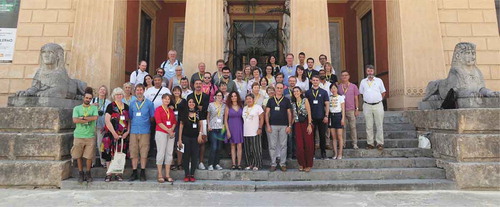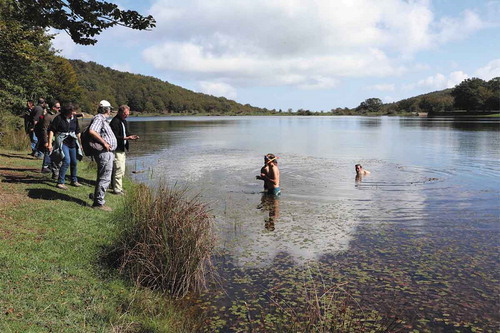The 22nd Meeting of the Group of European Charophytologists (GEC) was held from 17 to 21 September 2018 in Palermo. It was convened by the International Research Group on Charophytes (IRGC) and organised by the Department of Biological, Chemical and Pharmaceutical Sciences and Technologies (STEBICEF) of the University of Palermo, in collaboration with the Interdepartmental Research Centre on Technology–Environment Interaction (CIRITA) of the same university, and FORUM PLINIANUM onlus.
During the meeting, in oral and poster sessions, several contributions were presented on different fields connected with or involving Characeae: here we have the opportunity to publish some of them, in a special section of the present issue of Webbia.
Characeae are a key group in inland waters of Europe (and – of course – of all the world), but they are currently understudied, both at regional and global scale. This causes a big gap in our knowledge, as well as in environment monitoring and habitat and biodiversity conservation. The hope is that this collection of papers can supply useful data and contribute to attract more attention from researchers, field biologists, but also politicians, to this particular group of plants: they are in fact so important from several points of view, from evolutionary studies to applied ecology, from palaeontology to physiology, involving also conservation issues. By the way, one of the main gaps to fill is the lack of a shared checklist of the species occurring in Europe, and consequently a shared European Red List; for the first point, the activity of a group working on a ‘European Charophyte monograph project’ is hopefully going to fill the gap in the near future.
The papers here presented range across a spectrum of topics.
Becker (The Characeae of Sardinia (Italy): habitats, distribution and conservation) presents the results of his 30-year-long field investigations on the Characean flora of Sardinia, not only improving the knowledge and the number of species for the island, but reporting a new species for Europe, and new species for Italy. In addition, the author discusses threats and pressures on Characeae and their habitats in Sardinia, proposing appropriate actions for their conservation.
Nowak et al. (The occurrence of sexual Chara canescens in Sardinia (Italy)) show a first genetic analysis of the new bisexual population of Chara canescens found in Sardinia: this population is particularly important because it is the second verified recent location with bisexual C. canescens in the whole of Europe.
Romanov et al. (New records and observations to the Characean flora of Sicily (Italy)) present new data on the Characeae occurring in Sicily, collected during the last year. Five species proved to be new to Sicily, including two new also to Italy. The checklist of the Characeae of Sicily has been updated, and it currently includes 25 species.
Abdelahad et al. (The ‘Chara hispida species complex’ kept in the Herbarium RO of the Sapienza University of Rome) report available information on the Chara hispida group according to the specimens preserved in the Herbarium of Rome, updating names and reviewing some specimens.
Sinkeviciene (Peculiarities of Chara filiformis distribution and oospore sizes in Lithuania) presents data on distribution and ecological requirements of Chara filiformis in Lithuanian water bodies, as well as new data on morphometry of oospores of the species that are significantly different from most of the previously known data.
Guarino et al. (One Chara does not make Charetea in the Mediterranean aquatic vegetation) present their preliminary results on aquatic vegetation in Sicily, proposing their observations about the occurrence of Characeae in different phytosociological classes.
Calero and Rodrigo (Germination capability of four charophyte populations from Mediterranean brackish ponds under warm experimental conditions) present their study of the diaspore bank of two brackish ponds and its germination capability, investigating the potential negative effect of increased temperature on the germination rates of the four examined Characeae species.
The last two papers were not presented at the GEC meeting of Palermo, but they are included here as they concern the same topics.
Romanov (New interesting records of charophytes from Eurasia and Africa) presents some floristic novelties based on the study of herbarium collections. Records are from Africa, Europe and Asia.
Torn et al. (Effects of climate change on the occurrence of charophytes and angiosperms in a brackish environment) investigated the potential response of occurrence of charophyte and angiosperm communities to climate change in the Baltic Sea, using a modelling method to predict sensitivity of various species to climate change and the changes in species’ distribution under projected changes of environmental variables.
Finally, I want to thank all the authors, but also the reviewers that kindly worked for the papers of this section.


